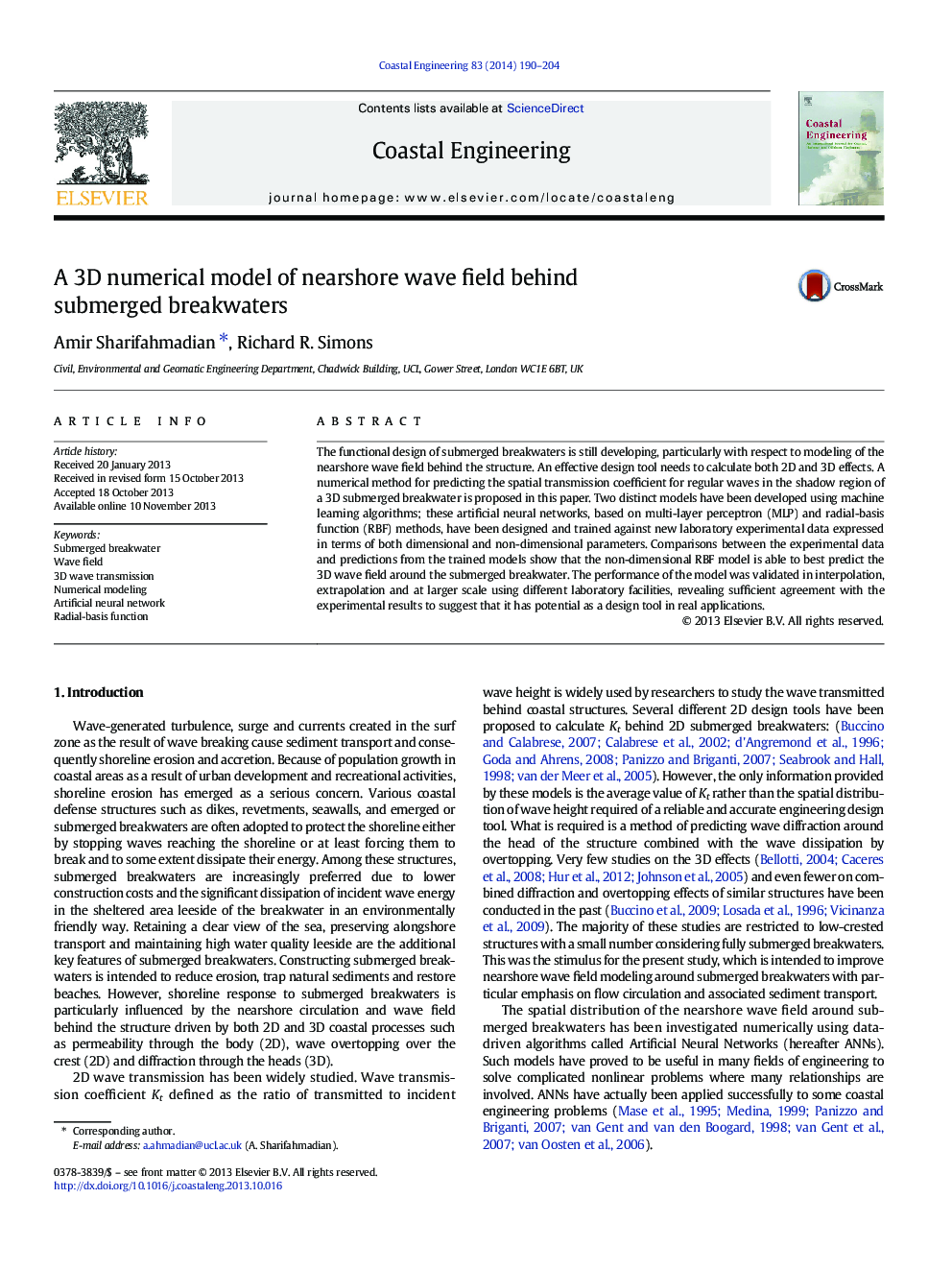| Article ID | Journal | Published Year | Pages | File Type |
|---|---|---|---|---|
| 8059867 | Coastal Engineering | 2014 | 15 Pages |
Abstract
The functional design of submerged breakwaters is still developing, particularly with respect to modeling of the nearshore wave field behind the structure. An effective design tool needs to calculate both 2D and 3D effects. A numerical method for predicting the spatial transmission coefficient for regular waves in the shadow region of a 3D submerged breakwater is proposed in this paper. Two distinct models have been developed using machine learning algorithms; these artificial neural networks, based on multi-layer perceptron (MLP) and radial-basis function (RBF) methods, have been designed and trained against new laboratory experimental data expressed in terms of both dimensional and non-dimensional parameters. Comparisons between the experimental data and predictions from the trained models show that the non-dimensional RBF model is able to best predict the 3D wave field around the submerged breakwater. The performance of the model was validated in interpolation, extrapolation and at larger scale using different laboratory facilities, revealing sufficient agreement with the experimental results to suggest that it has potential as a design tool in real applications.
Keywords
Related Topics
Physical Sciences and Engineering
Engineering
Ocean Engineering
Authors
Amir Sharifahmadian, Richard R. Simons,
